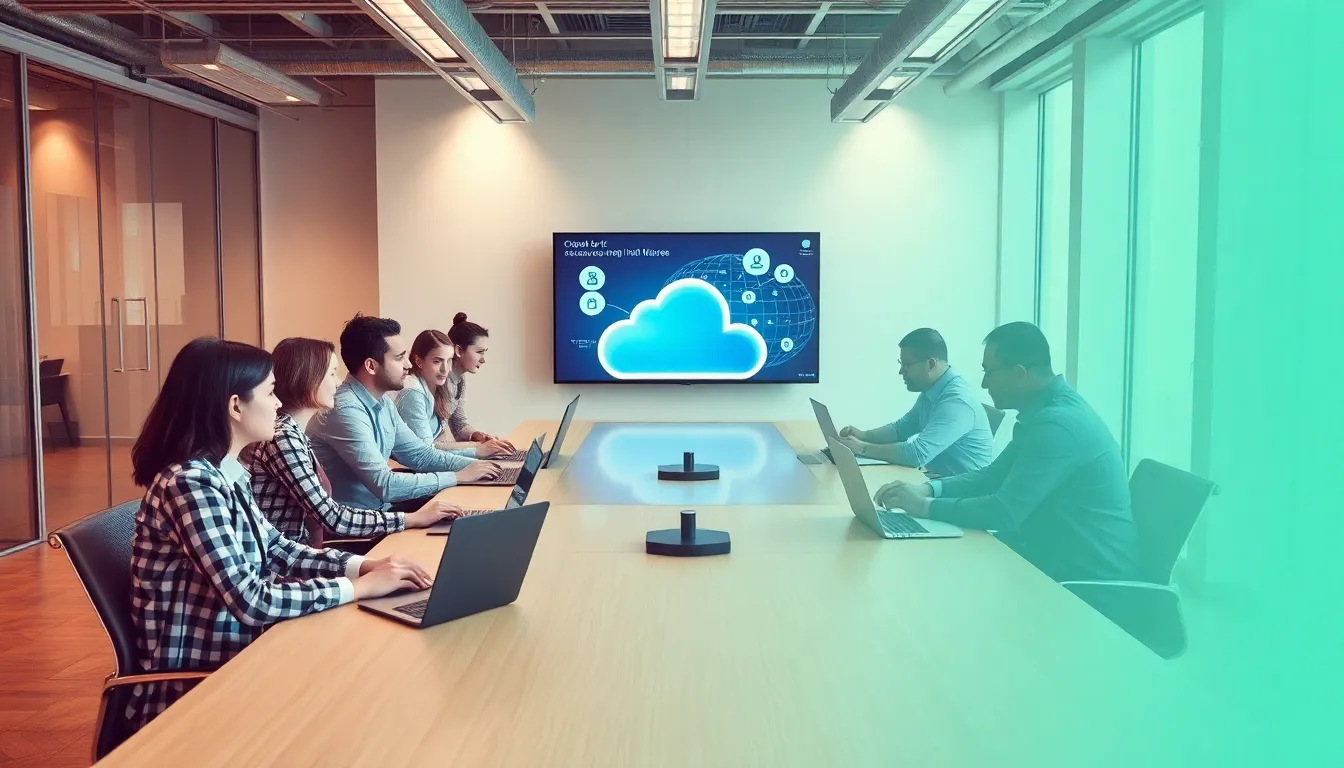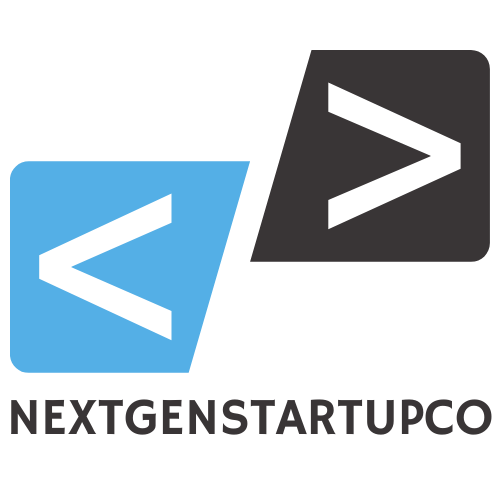In a world where software reigns supreme, keeping up with SaaS standards is like trying to catch a greased pig at a county fair—slippery and a bit chaotic. As businesses dive into the cloud, understanding these standards becomes crucial for ensuring smooth sailing and avoiding costly pitfalls. After all, nobody wants to end up in a tech tangle that could have been avoided with a little know-how.
But fear not! Navigating the SaaS landscape doesn’t have to feel like deciphering an ancient language. With the right standards in place, organizations can streamline operations, enhance security, and boost customer satisfaction. So buckle up and get ready to discover why adhering to SaaS standards isn’t just a good idea—it’s the secret sauce for success in today’s digital age.
Table of Contents
ToggleOverview of SaaS Standards
SaaS standards refer to a set of guidelines and best practices that govern the development, deployment, and management of Software as a Service applications. These standards ensure compatibility, security, and performance within the SaaS ecosystem. Organizations rely on these standards to facilitate smooth integration and interoperability among various cloud services.
Compliance with industry-specific regulations plays a crucial role in maintaining customer trust and data security. Adherence to standards like ISO/IEC 27001 establishes a foundation for effective information security management. Keeping up with the latest security protocols helps organizations mitigate risks associated with data breaches and service interruptions.
Performance metrics, including uptime guarantees and response times, define quality expectations for SaaS providers. Evaluating Service Level Agreements (SLAs) allows customers to understand the reliability and performance guarantees offered by their providers. Strong SLAs can enhance customer satisfaction by ensuring services function optimally.
User experience remains pivotal, as user-centric design principles underpin the creation of intuitive SaaS applications. Employing accessibility standards ensures that software is usable by individuals with varying abilities, fostering inclusivity. Feedback loops from user interactions further drive improvements and innovations in software design.
Additionally, standardization fosters collaboration within the SaaS community. Development frameworks and API standards simplify the process of integrating third-party applications. By adhering to these standards, organizations can create a cohesive ecosystem that supports dynamic business operations.
Engagement with ongoing industry discussions ensures that businesses stay current with evolving SaaS standards. Organizations that actively participate in these conversations benefit from insights into emerging trends and best practices. Staying informed enables companies to optimize their SaaS solutions effectively, enhancing their competitive edge.
Importance of SaaS Standards

SaaS standards play a pivotal role in today’s cloud-based environment, establishing a foundation for businesses to build reliable applications. Adhering to these standards ensures that companies can deliver secure and effective solutions.
Compliance and Security
Compliance with industry standards, like ISO/IEC 27001, is critical for safeguarding customer data. Regulations dictate how data is handled, ensuring privacy and protection against breaches. SaaS providers minimizing risks demonstrate their commitment to security. Strengthening security protocols becomes essential to maintain user trust and uphold a positive brand reputation. Regular audits can assure compliance and highlight areas for improvement. Enhanced security measures foster a safe ecosystem where data integrity remains intact.
Interoperability
Interoperability enhances user experience by allowing seamless integration among different SaaS applications. Standardized APIs facilitate communication between various services, enabling organizations to build cohesive systems. Efforts toward compatibility build functional bridges between disparate platforms. Streamlined data exchange occurs without significant technical barriers. Ensuring that applications can work together maximizes value for users, empowering them to leverage multiple services efficiently. Inherent flexibility supports adaptation to changing business needs, driving growth in evolving markets.
Major SaaS Standards
Understanding major SaaS standards enhances the effectiveness and security of cloud-based solutions. Several key frameworks guide the development and management of these applications.
ISO/IEC Standards
ISO/IEC standards, such as ISO/IEC 27001, provide a framework for information security management. These standards ensure organizations implement effective security controls, safeguarding customer data and fostering trust. Compliance with ISO/IEC standards helps businesses demonstrate their commitment to maintaining high-security levels. Regular audits and assessments verify adherence to these standards. Companies that follow ISO/IEC guidelines not only enhance their security posture but also improve their overall operational efficiency.
API Standards
API standards play a crucial role in ensuring interoperability among various SaaS applications. By establishing consistent protocols, these standards facilitate seamless integration between different services. Well-defined API standards enhance communication between systems and allow developers to create cohesive ecosystems. Enhanced user experiences result from the efficient communication enabled by standardized APIs. Adhering to these standards simplifies the integration process for organizations, making it easier to adapt to evolving business needs.
Challenges in Implementing SaaS Standards
Implementing SaaS standards comes with several challenges that organizations must navigate. These challenges often influence the overall success of SaaS adoption.
Cost Implications
Cost represents a significant challenge in implementing SaaS standards. Companies often face initial investments for standard compliance, which can include new software, training, and infrastructure upgrades. Budget constraints may limit organizations seeking to adopt extensive standards. As a result, smaller businesses might struggle to allocate the necessary resources to achieve compliance. Long-term savings and operational efficiencies often offset these initial costs. However, failure to invest in standards can lead to unexpected expenses stemming from security breaches or inefficiencies. Organizations must clearly evaluate the financial impact of adopting these standards against potential risks to ensure informed decision-making.
Resistance to Change
Resistance to change frequently obstructs the successful implementation of SaaS standards. Employees accustomed to legacy systems may resist transitioning to a standardized approach. This reluctance can stem from fear of the unknown or concerns about job displacement. Effective communication can help alleviate these concerns by clearly explaining the benefits standardization offers. Offering comprehensive training programs also facilitates smoother transitions, empowering employees to embrace new systems. Leadership plays an essential role in driving change by modeling a commitment to adopting these standards. Engaging teams throughout the process fosters a culture of collaboration and support, ultimately aiding in overcoming resistance.
Future Trends in SaaS Standards
Emerging trends in SaaS standards indicate a shift towards greater security and compliance measures. Increased reliance on data analytics drives the demand for streamlined frameworks that facilitate seamless integration. Organizations prioritize privacy regulations, reflecting growing consumer concern over data security.
Artificial intelligence (AI) adoption will shape SaaS standards, enhancing user experience through personalized services. AI tools analyze user behavior, enabling providers to create tailored solutions that meet specific client needs. This data-driven approach empowers companies to refine their offerings while adhering to established standards.
Integration of DevOps practices ensures continuous delivery and innovation in SaaS applications. By adopting these practices, organizations foster collaboration between development and operations teams. This enhances software quality and accelerates deployment cycles while maintaining compliance with industry standards.
Moreover, focusing on automated compliance tools simplifies adherence to regulations. These tools allow businesses to monitor compliance in real-time, reducing the risks associated with manual processes. This trend supports organizations in navigating the complex landscape of SaaS standards more efficiently.
Additionally, the move towards open-source solutions empowers organizations to customize their applications. Open-source frameworks promote collaboration and allow businesses to adapt solutions to fit their unique requirements. Incorporating these scalable models streamlines the integration process while upholding industry standards.
Lastly, an emphasis on sustainability is becoming prominent within SaaS standards. Many organizations seek practices that reduce their carbon footprint while maintaining operational efficiency. This growing awareness fosters a commitment to socially responsible solutions and aligns with evolving consumer expectations.
These trends collectively shape the future of SaaS standards, influencing how businesses navigate the cloud landscape. Continuous adaptation ensures organizations stay competitive while enhancing security, compliance, and user satisfaction.
Embracing SaaS standards is vital for businesses aiming to thrive in the cloud landscape. These standards not only enhance security and interoperability but also streamline operations and elevate customer satisfaction. As organizations navigate the complexities of SaaS adoption, understanding and implementing these guidelines will prove essential.
The ongoing evolution of SaaS standards reflects the industry’s commitment to security, compliance, and user experience. By staying informed about emerging trends and best practices, businesses can better position themselves to meet customer expectations and adapt to the dynamic digital environment. Ultimately, a proactive approach to SaaS standards will empower organizations to build robust solutions that foster trust and drive success.



